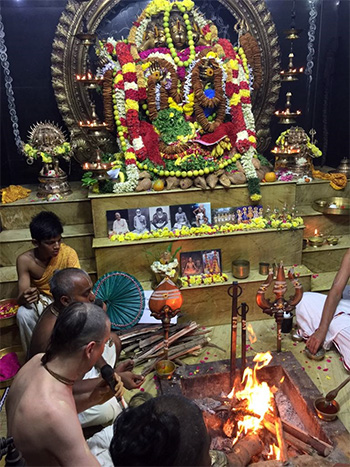Question: What was the role of non-vedic kings in the Mahabharata war?
In the Mahabharata there is mention of kings who were outside the levels of “civilization” who took part in the Great War. They would belong to the 10th, 11th, and 12th varnas. Vedic civilization is based on four varnas (divisions of society), but there are people who do not fit within these four. They can not measure up to this high standard. The scriptures list a total of twelve designations, the four vedic varnas, and eight additional non-vedic varnas. In the battle of Kurukshetra, Duryodhana took all of the lower fighters onto his side. It is stated that none of them fought on the side of the Pandavas.
Their warfare was throwing rocks and other very primitive actions. Among all of the great maha-rathas, the astra fighters, these others were completely primitive. For example, they would go into the elephant division of an army and make the elephants sick. They were humans, but in comparison to the maha-rathas they were like insects. Duryodhana sent many such people to disturb Bhima’s movements. Bhima was such a high-class physical fighter that when he saw these groups of people walking with rocks, trying to hit him, he would become very much agitated. It would make him do things which were completely inordinate. Because he was physically too powerful, he would get upset and throw everything everywhere. Just to disorganize him Dhuryodhana was using them.
They would go and bite the elephant’s legs, and because their teeth were poisonous, the elephant would faint. This was their fighting. They wouldn’t go in front of the elephants like Bhima and hold them by the trunk to throw them. They would walk under the elephants, and do all kinds of annoying things like putting needles in the elephant’s tail. In contrast to the great heros fighting in the war, like Drona and Kripa, who used their powerful astras, these others were exactly like insects.
Receive our daily email newsletter on Hinduism, Yoga, Meditation, Ayurveda and Natural Healing.







Maybe this were our forefathers, and Pandavas and Kauravas were not humans at all in the sense we use now?